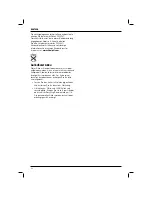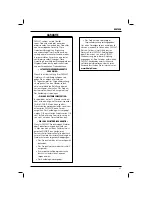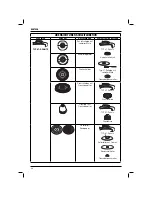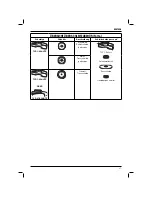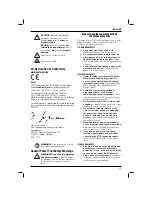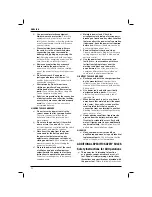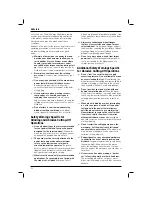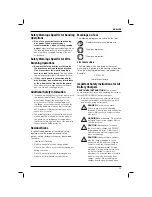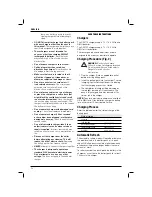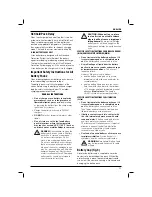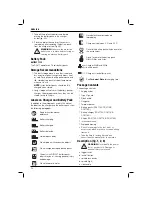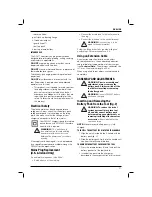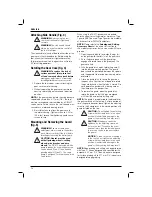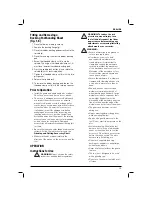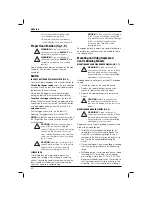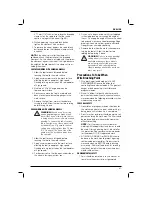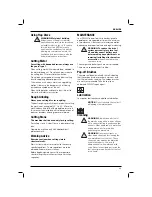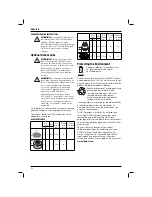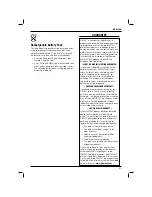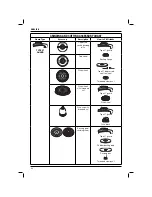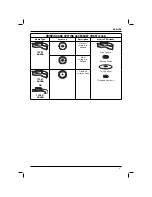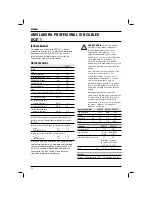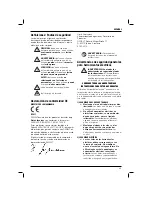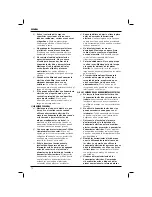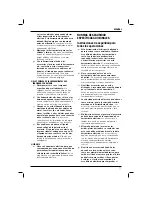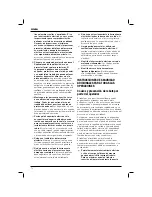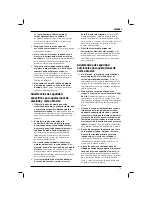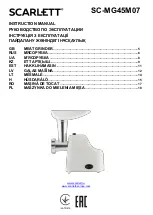
ENGLISH
58
Attaching Side Handle (Fig. 4)
WARNING:
Before using the tool,
check that the handle is tightened
securely.
WARNING:
The side handle should
always be used to maintain control of
the tool at all times.
The side handle (e) can be fitted to either side of the
gear case in the threaded holes. Before using the
tool, check that the handle is tightened se cure ly.
To improve user comfort, the gear case will rotate
90˚ for cutting operations.
Rotating the Gear Case (fi g. 4)
WARNING: To reduce the risk of
serious personal injury, turn tool
off and remove battery pack before
making any adjustments or removing/
installing attachments or accessories.
1. Remove the four corner screws attaching the
gear case to motor housing.
2. Without separating the gear case from motor
housing, rotate the gear case head to desired
position.
NOTE:
If the gear case and motor housing become
separated by more than 3.17 mm (1/8"), the tool
must be serviced and re-assembled by a D
E
WALT
service centre. Failure to have the tool serviced may
cause brush, motor and bearing failure.
3. Re-install screws to attach the gear case to
the motor housing. Tighten screws to 2.2 Nm
(20 in-lbs.) torque. Overtightening could cause
screws to strip.
Mounting and Removing the Guard
(fi g. 5)
WARNING:
Prior to assembly and
adjustment, always remove the battery
pack. Always switch off the tool before
inserting or removing the battery pack.
CAUTION: Guards must be used
with all grinding wheels, cutting
wheels, wire brushes and wire
wheels.
The DC411 is provided with a
guard intended for use with depressed
centre wheels (Type 27) and hubbed
grinding wheels (Type 27). The same
guard is designed for use with and wire
cup brushes.
When using the DC411 grinder with a bonded
abrasive wheel for cutting metal or masonry a Type
1 guard MUST be used. Type 1 guards are available
at extra cost from D
E
WALT distributors.
NOTE:
Please refer to the
Grinding and Cutting
Accessory Chart
at the end of this section to
show other accessories that can be used with these
grinders.
1. Open the guard latch (p), and align the lugs (m)
on the guard with the slots (n) on the gear case.
2. Push the guard down until the guard lugs
engage and rotate freely in the groove on the
gear case hub.
3. With the guard latch open, rotate the guard (i)
into the desired working position. The guard
body should be positioned between the spindle
and the operator to provide maximum operator
protection.
4. Close the guard latch to secure the guard on
the gear case. You should not be able to rotate
the guard by hand when the latch is closed. Do
not operate the grinder with a loose guard or
the clamp lever in open position.
5. To remove the guard, open the guard latch,
rotate the guard so that the lugs are aligned
with the slots and pull up on the guard.
NOTE:
The guard is pre-adjusted to the diameter of
the gear case hub at the factory. If, after a period of
time, the guard becomes loose, tighten the adjusting
screw (o) with clamp lever in the closed position with
guard installed on the tool.
CAUTION:
Do not tighten the adjusting
screw with the clamp lever in the open
position. Undetectable damage to the
guard or the mounting hub may result.
CAUTION:
If the guard cannot be
tightened by the adjusting clamp, do
not use the tool. To reduce the risk of
personal injury, take the tool and guard
to a service centre to repair or replace
the guard.
NOTICE:
To reduce the risk of damage
to the tool, do not tighten the adjusting
screw with the clamp lever in the open
position. Undetectable damage to the
guard or the mounting hub may result.
NOTE:
Edge grinding and cutting can be performed
with Type 27 wheels designed and specified for this
purpose; 6.35 mm (1/4") thick wheels are designed
for surface grinding while 3.17 mm (1/8") wheels are
designed for edge grinding.

